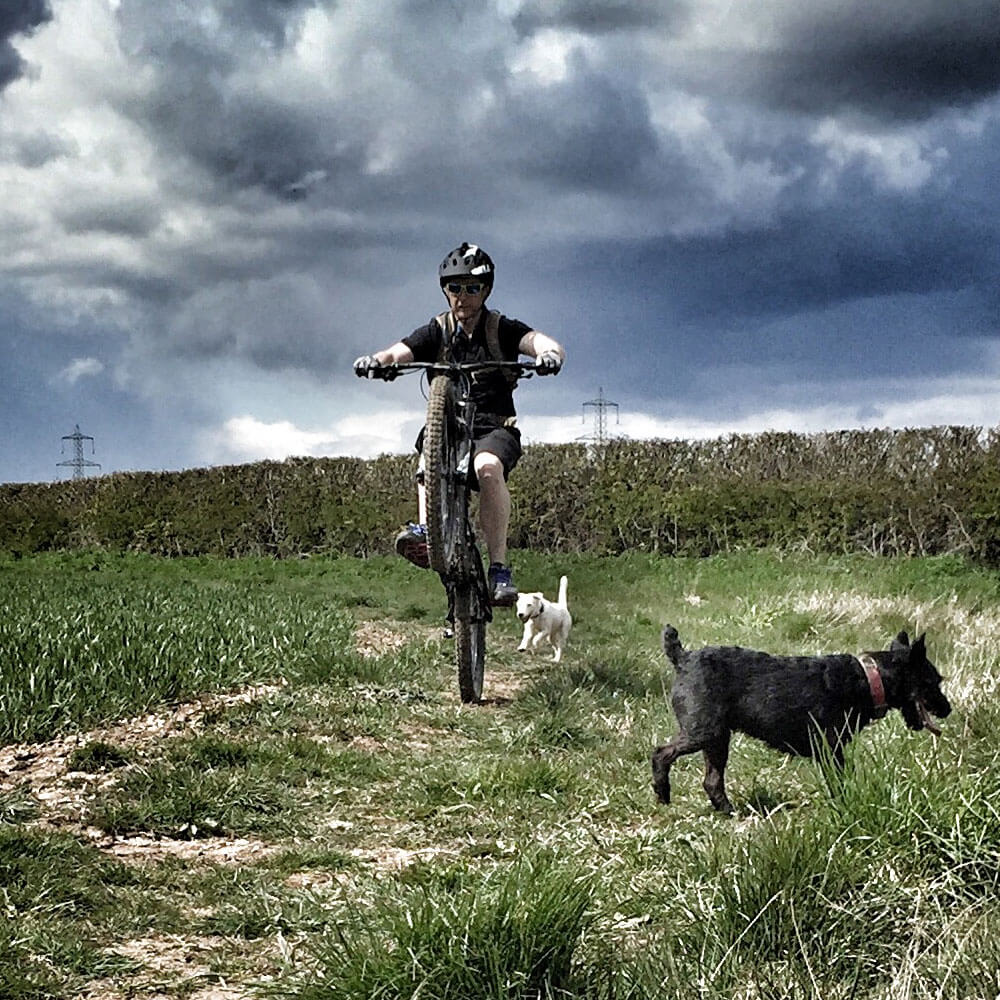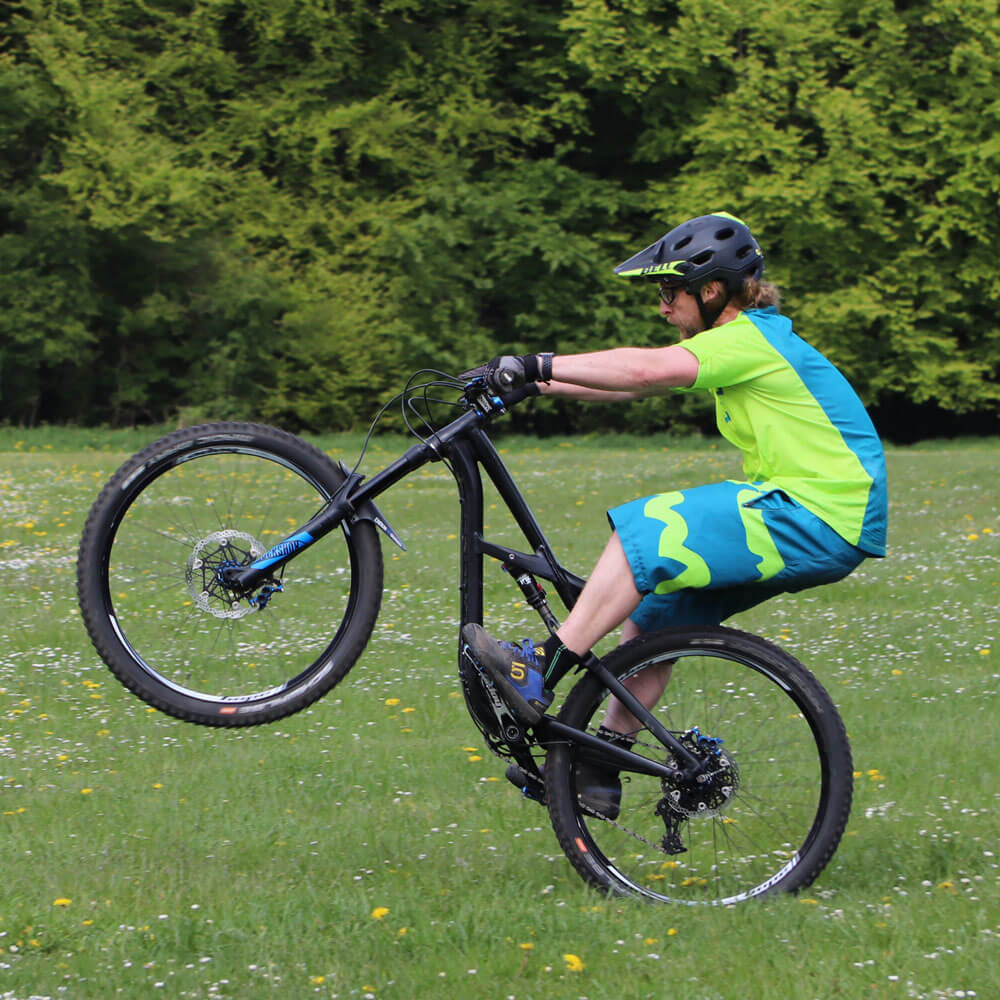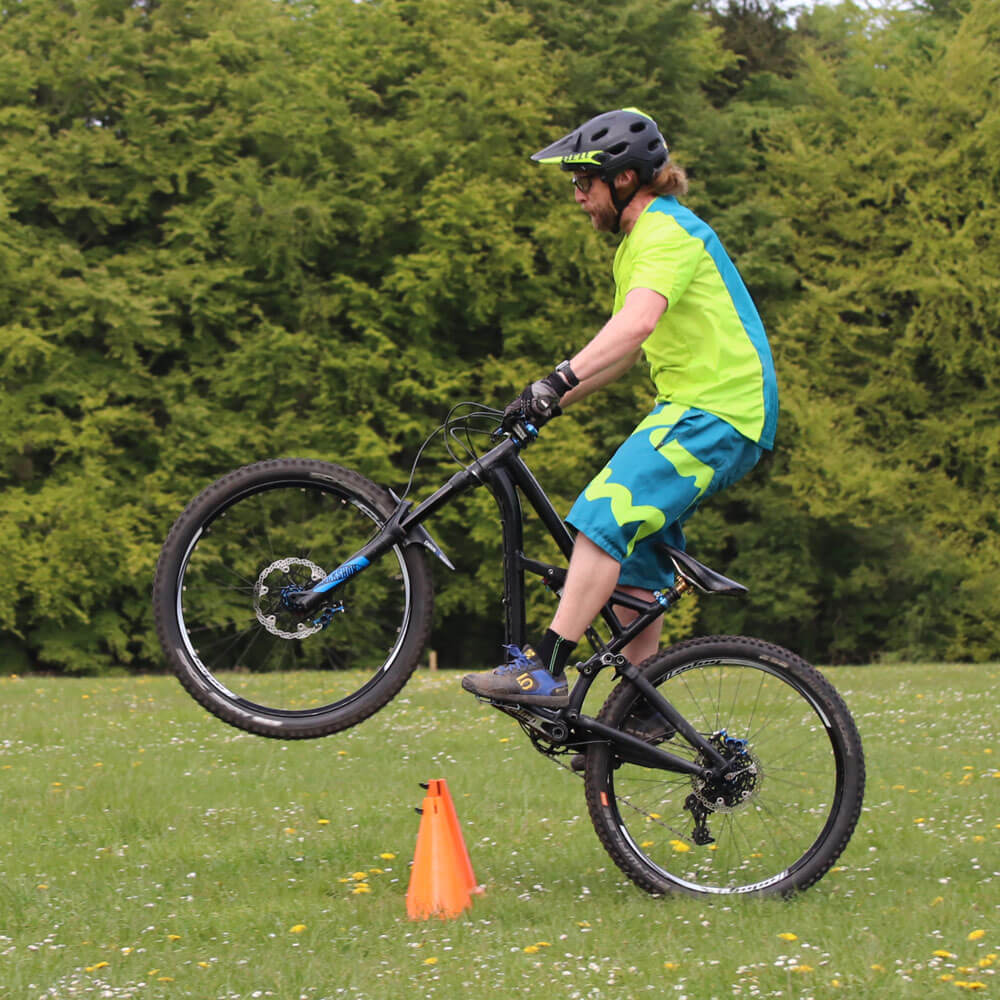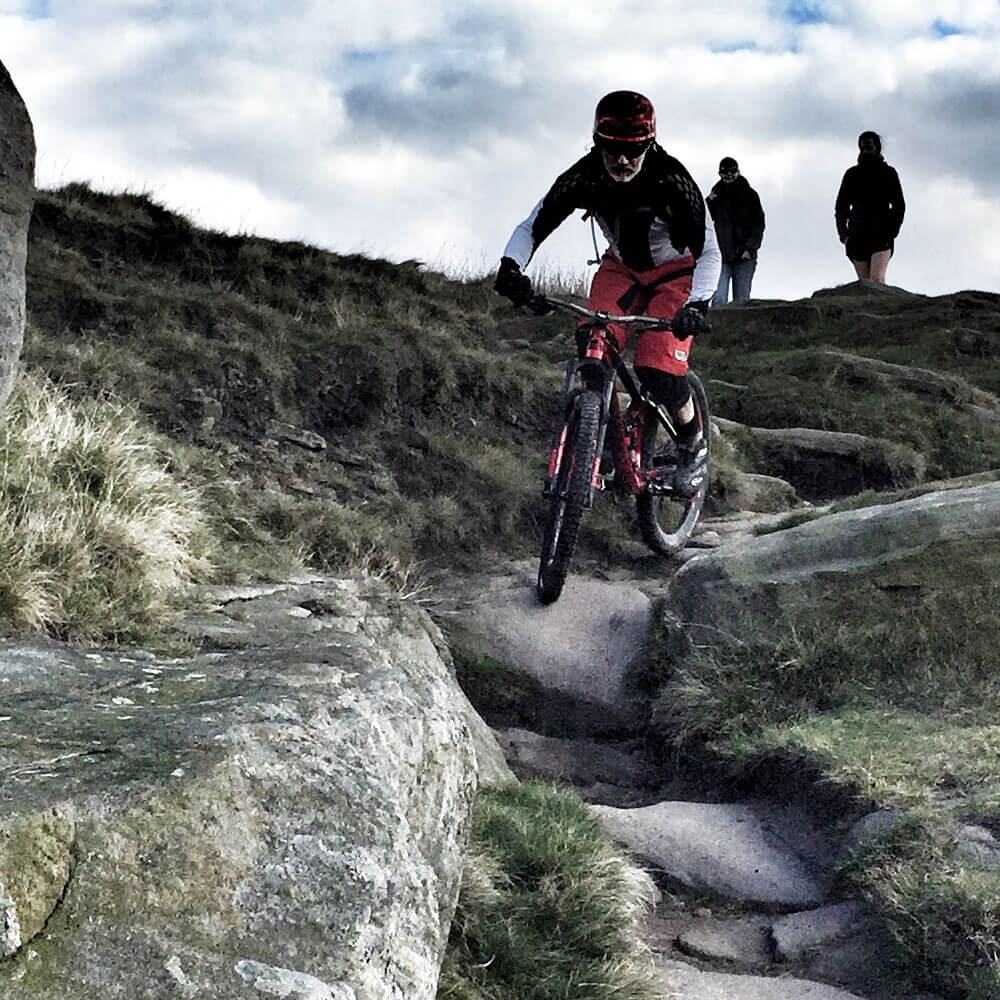More than just making you look super cool
If you’re stuck for time, the short answer to the question above is ‘Hell yeah!’. All of these techniques are super useful for trail riding. Not only do they provide you with a useful toolset for tackling trail features, in many cases they open up other, more advanced techniques. Plus, the balance and range of body movement required for these techniques combines to give you a mastery of your bike that brings added confidence wherever you ride.
Wheelies

What’s a wheelie?
A wheelie is pedalling whilst balancing on the back wheel of your bike. With a wheelie you’re typically seated.
Why do I need one?
Being able to raise the front wheel of your bike whilst travelling slowly is a really useful trail skill.
Here’s a couple of examples:
- You’re climbing and come across a rock step or fallen branch across the trail. A short wheelie will get your from wheel neatly over the obstacle without interrupting your flow.
- Ever ridden muddy, natural trails in the winter? Sometime you come across those deep puddles. You might think “Can I ride through this or is it going to swallow my front wheel up to the axle?” A wheelie will get your front wheel safely over the puddle. Your back wheel sinking in is much less likely to throw you over the handlebars.
Manuals

What’s a manual?
Like the wheelie, the manual is where you lift your front wheel and balance on the back wheel. But with the manual you don’t pedal and you remain stood on the pedals instead of sitting on your seat.
Why do I need one?
In my opinion, the manual is one of THE most useful trail skills you can develop. You don’t have to be able to manual the length of your street for it to be useful. If you can keep your front wheel up for a little over 1 bike length, you have a really effective trail skill.
Here’s some usage examples:
- Floating over roots and rocks. Sometimes roots and rocks can snag up your front wheel and slow you down, get that front wheel up and float over them on the back wheel.
- Drop-offs. Being able to keep your front wheel off the ground for a bike length will give you massive confidence for drop-offs. You don’t need to be able to have the front wheel really high; an inch or two would be enough for you to land both wheels together.
Bonus: Mastering the manual will help you to intuitively judge the balance point of your bike. That’s a huge confidence boost on a variety of trails!
Once you master the manual you’ll use it everywhere. It’s effective and it feels awesome!
Bunnyhops

What’s a bunnyhop?
Like the name suggests, the bunnyhop is the act of ‘hopping’ your bike. The English bunnyhop is where both wheels leave the ground at the same time, the American bunnyhop (or J-hop) is where the front wheel comes up first (like a manual), then you hop the back wheel.
Why do I need one?
Hopping over obstacles on the trail is a really useful skill, especially when you start riding natural trails, where you’re more likley to encounter unexpected obstacles.
Here’s a couple of examples:
- You’re flying down the trail and encounter a fallen branch or really big tree roots. You don’t want either wheel to hit the obstacle. Being able to hop over it means you don’t have to stop (or even slow down).
- You might find the trail suddenly throws in a step-up. The bunnyhop can be used top hop up onto the higher level.
- The American Bunnyhop is used for jumps, where you want to be able to make more height.
Track Stands

What’s a track stand?
A track stand is simply where you stop the bike and hold it steady without putting a foot down.
Why do I need one?
Track stands are particularly useful for giving you a moment to check out a line before rolling in.
Let’s say you’re riding along and reach a technical trail feature you haven’t ridden before. Rather than stop, put your foot down, then have that awkward feeling of setting off and trying to get your foot back on the pedal, you simply track stand, spot your line and roll in.
Stoppies

What’s a stoppie?
A stoppie is where you brake with your front brake and allow the rear of the bike to come off the ground.
Why do I need one?
Being able to perform a stoppie is another example of improving your overall balance on your bike.
In practical terms, whilst the rear wheel is in the air you can allow it to turn left or right, using the front wheel as a pivot point. This can come in handy for slow, very tight switchback corners, where you wouldn’t ordinarily be able to manoeuvre the bike around, and you don’t have enough speed to skid the bike.
I'm convinced! How do I learn these skills?
You can watch videos on Youtube or maybe ask a skilled friend. The best way is to seek some coaching (I know, I would say that). Bias aside, a coaching session can really accelerate your learning. Having someone demonstrate, then watch your technique and provide valuable feedback. Video recording and analysis supercharges your learning even further.
If you have something you’d like to learn or improve upon, drop me a line.
...and finally, a note about practice
We all know someone who mucks about and ‘showboats’ whenever there’s a flat section on the trails. In my group, that’s me (and on more than one occasion I’ve crashed spectacularly doing this). But here’s my logic… Take 2 riders who go riding together: Rider one uses the flat sections to chat about last night’s telly and get a bit of a breather, Rider two practices his trail skills. Who’ll be the more skilled rider after a year or two of regular rides? Something to think about.
